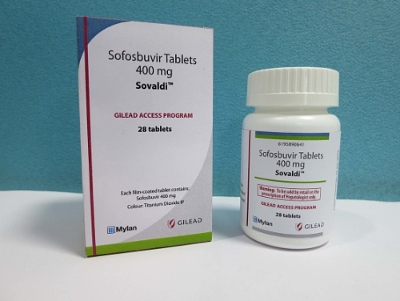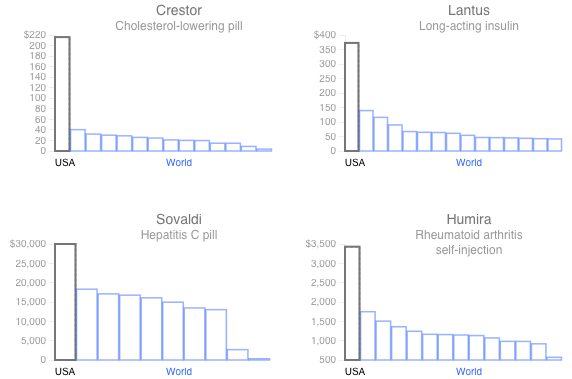Why The Same Pill That Costs $1,000 in America Sells for $4 in India

By:
A drug that treats hepatitis C — a liver disease that could lead to cirrhosis and liver cancer if left untreated — costs $1,000 per pill in the U.S., while the rest of the world can get the medicine for a fraction of that price. In India, where an estimated 12 million people have been infected with the hepatitis C virus, the drug goes for less than $5 per pill.
RELATED: These Drugs Expose the Troubling Culture of Drug Pricing
Gilead Sciences Inc., the pharmaceutical company that sells the drug, came under fire in December 2013 after listing Sovaldi at $84,000 for a 12-week course regimen. The treatment is considered exceptionally effective, treating the liver disease in as few as three months with minimal side effects. The controversy over Sovaldi's high cost under Gilead drove a national conversations about drug pricing in the U.S.
 PR Newswire - prnewswire.com
PR Newswire - prnewswire.com
What's particularly striking about this drug is the dramatic difference in pricing between the U.S. and other countries around the world, including Canada, Germany, the U.K., France, and India. In contrast to U.S. policy, the governments of these countries regulate drug pricing to some extent. American drug companies argue that comparing the market price of their products in these countries is unfair because they don't take into account the discounts they offer to insurers and pharmacy benefit managers.
In an effort to illustrate the international drug price disparities, Bloomberg Business used data from an investment research firm to approximate the discounts and come up with an accurate depiction of pricing trends.
 Bloomberg - bloomberg.com
Bloomberg - bloomberg.com
Besides government regulation, another reason that the same drug costs about 250 times more in the U.S. than in India is simple: competition. Gilead licensed 11 Indian companies to make generic versions of Sovaldi and struck marketing deal with other firms, effectively driving down prices in a country where hepatitis C is widespread and where a $1,000 per pill treatment regimen would be financially out of reach for many infected with the disease.
"Like others in the industry, the company arranges to make life-saving cures available in some parts of the world for far less; laws and pressure introduced so-called tiered pricing after expensive anti-HIV treatments became available in the ’90s and reduced deaths in rich countries and not poor ones," Bloomberg reported.
In exchange for a seven percent cut of the sales, Gilead lets other companies distribute the generic form of Sovaldi (there are more than a dozen generic versions in the market now). Gilead spokesperson Nathan Kaiser says the company wants to "foster competition in the marketplace" in low-income countries. But in the U.S., it seems to be another story entirely.
RELATED: Why Drug Prices Are Three Times Higher In the U.S. Than U.K.
Why people are talking about drug pricing
Drug pricing has become a hot topic in the run-up to the 2016 presidential election — especially after former Turing Pharmaceuticals CEO Martin Shkreli hiked the price of a drug that helps AIDS and cancer patients by about 5,000 percent in September — and many health reform advocates have called for increased regulation of the U.S. pharmaceutical industry, in order to ensure that life-saving drugs are both accessible and affordable.
Check out this ATTN: video to learn more about the Shkreli story.
